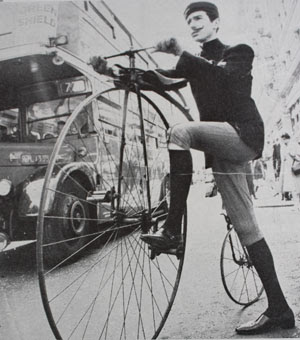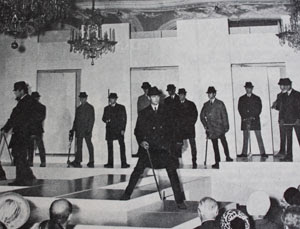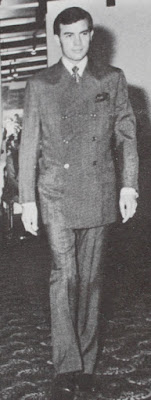Collections through Cake has been busy across the Summer, and in this post I'd like to bring to you egg-tention some fascinating objects from our oological collections ... Eggy, Steady - Go!*
Another question could be what comes first, the egg or the nest?
Kirsty, our Bird Skins Curator, previously #MusCake-d about a Barn Swallow's nest in the collection
*Puns will only get poorer from this point on
Friday 29 August 2014
Friday 22 August 2014
Choosing Leeds objects for ‘Roman Empire: Power and People’
As part of the British Museum touring
exhibition ‘Roman Empire: Power and People’, which is at Leeds
City Museum 20th Sept – 4th Jan, we decided to highlight some of
our own Roman collections.
Many of our fantastic Roman objects are
already on display in Leeds City Museum, both in the Ancient Worlds
and the Story of Leeds galleries, but we have collected many more
objects since these galleries opened and we want to tell different
stories in ‘Roman Empire’.
 |
| Marble head of a satyr, 100-50 BC, collected in 1896 from Lord Savile’s excavations at Lanuvium, Italy |
Firstly we integrated local objects
into the existing themes of the exhibition, and objects from
Yorkshire are highlighted throughout so visitors can easily spot
them. A beautiful fantail brooch from Wattle Syke sits alongside
several brooches from the British Museum’s collection.
Altars from
Adel and Chapel Allerton fit into the wider theme of religious
beliefs, as does a silver ring depicting Fortuna found by a metal
detector user in Micklefield. These displays are also complemented
by objects from The Yorkshire Museum’s collection, which root these
larger ideas about the empire to Yorkshire objects.
 |
| Fantail brooch, AD 70-130, from recent excavations at Wattle Syke, West Yorkshire |
In the introductory area of the gallery
there is also a display about the how Leeds Museums and Galleries
collected all of this Roman stuff in the first place. It looks at
19th century collecting by the Leeds Philosophical and Literary
Society, and at what Roman material we collect today.
We hope that by highlighting our local
Roman heritage, visitors will engage more with the wonderful objects
on display from across the Roman Empire, and embrace the Roman period
as part of our shared history.
By Archaeology Curator Katherine Baxter
Thursday 21 August 2014
Well Suited: The First Male Models
 |
| George Rutland riding a penny farthing on the street in 1964 (Hepworth Mercury Archive) |
Do models care about what they wear? According
to George Rutland, one of Britain’s first top male models, they
absolutely do!
From penny farthing-riding plus fours to groovy
wide-leg flares with high-heeled boots to a canary yellow-coloured
suit, Rutland had the opportunity to wear a wonderful array of
fashionable clothing during his modelling career in the 1960s and
‘70s.
In a recent interview, conducted as part of a research
project exploring the fashion industry in Leeds during the post-war
period, the Bermuda-native confirmed that models do indeed take an
active interest in the pieces they showcase on the runway. Rutland
reminisces how he swelled with pride when walking down the catwalk in
a meticulously-tailored suit and firmly believes that a man never
looks or feels better than when he is wearing a classic suit.
 |
| Group of models (Hepworth Mercury Archive) |
Although
he initially came to England from Bermuda as an aspiring actor,
Rutland began modelling for Hepworths, a Leeds-based clothing
manufacturer, shortly before the company’s centenary in 1962. As
part of their fee, professional models received the suits they had
worn the previous season when they attended their annual fittings, so
Rutland amassed quite a sizeable wardrobe, including many bespoke
suits created by Savile Row designer Hardy Amies.
Rutland was so
pleased with the quality of these suits that he wore them every day,
not just on the runway. He was happily ‘plugging Hepworths the
whole time’. This commitment to maintaining an impeccable, suited
appearance proved highly beneficial for Rutland, as his Hardy Amies
Hepworth’s suit won him a film role and earned the approval of
esteemed photographer Sir Cecil Beaton. Rutland tells the story in
his own words here.
A very stylish man: Tony Armstrong-Barnes
Tony Armstrong-Barnes, Rutland’s
fellow model and close friend, received similar attention when
wearing Hardy Amies’ suits. Upon encountering photographers and
tailoring company executives around town, Barnes was often recognised
and complimented for his stylish apparel. He fondly recalls the time
that television producer Monty Berman saw him at the opera and
complimented the young model’s ability to wear a suit. Listen to
Barnes recount this moment here.
Unlike
Rutland, who later became a fashion show director, Barnes devoted
himself to professional modelling and worked for a number of
companies, including Hepworths, Burtons, Alexandre and Marks &
Spencer. Originally an aspiring dancer, who compares his childhood
dreams to those of Billy Elliot, Barnes unexpectedly began modelling
in the late 1950s after standing in for an ill friend at a photo
shoot for a knitting pattern cover.
 |
| Tony Armstrong-Barnes, 1965 (Hepworth Mercury Archive) |
Due to the lack of young male
models during this period, as well as his good looks and charm,
Barnes quickly became sought-after by prominent London photographic
studios and developed a large portfolio. Some of his most significant
jobs included a Kellogg’s Corn Flakes box advertisement with Patty
Boyd (a famous model who later married both George Harrison and Eric
Clapton) and Burton’s 1964 photo ad (the first colour advertisement
in an English newspaper).
Since models of the era were responsible
for providing their own accessories and styling themselves at photo
shoots, Barnes acquired a vast wardrobe consisting chiefly of suits,
which he wore in his leisure time as well as to work. Indeed, he was
so accustomed to donning formalwear on a daily basis that he even
wore a pinstripe suit for his first meeting with photographer David
Bailey, who is best known for capturing casual images. Barnes briefly
describes this meeting here.
Due to changing fashions throughout his
career, Barnes had the opportunity to wear a diverse variety of
styles, ranging from the velvet suits of the Teddy Boys to the narrow
trousers of Mods. Perhaps since he was expected to appear in
contemporary fashions on the runway, Barnes preferred to imitate the
classic, tailored style of actors like Cary Grant and George Pepard
when selecting his private wardrobe. In contrast, his friend Rutland
always embraced the latest trends and relished wearing flares and
platforms in the 1970s. Rutland still laughs when he recalls tripping
in a particularly expensive pair of trendy, high-heeled boots. Listen
to this amusing anecdote here.
After more than 50 years in the fashion
industry, both Rutland and Barnes continue to maintain substantial
wardrobes that include starched cuffs, neckties, and waistcoats and,
of course, high-quality suits. After all, as Rutland confirms, ‘You
can’t get away from a classic man’s suit.’ Leeds Museums are
fortunate to have several such fine suits in their collections, some
of which will be on display in the newly re-developed tailoring
gallery at Armley Mills.
By Curatorial Intern Katherine Young
(Images: Hepworth Mercury Archive)
Monday 11 August 2014
A slug on a night out
I saw this lovely Leopard Slug on my
path early this morning on my way to work. Leopard Slugs look rather
like normal slugs on a night out, wearing fetching leopard-skin
outfits. This one looked like it was on its way home after a big one.
One of the
weird things about Leopard Slugs is the way they mate. Once paired
up, they hang on a thick mucus thread, curled up together in a load
of slime. I once saw a pair of them hanging from the corner of my
bird table – it was quite a sight!
One of our previous curators here,
Adrian Norris, is an expert on slugs, and he added many to our museum
collection while he worked here. The best way to preserve slugs is to
put them in jars of ethanol, as they are soft-bodied and can’t be
taxidermied like vertebrates (animals with backbones, for example
birds and mammals). We have several jars of leopard slugs, as well as
other species, in our collection.
By Natural Sciences Curator Rebecca Machin
Subscribe to:
Posts (Atom)







